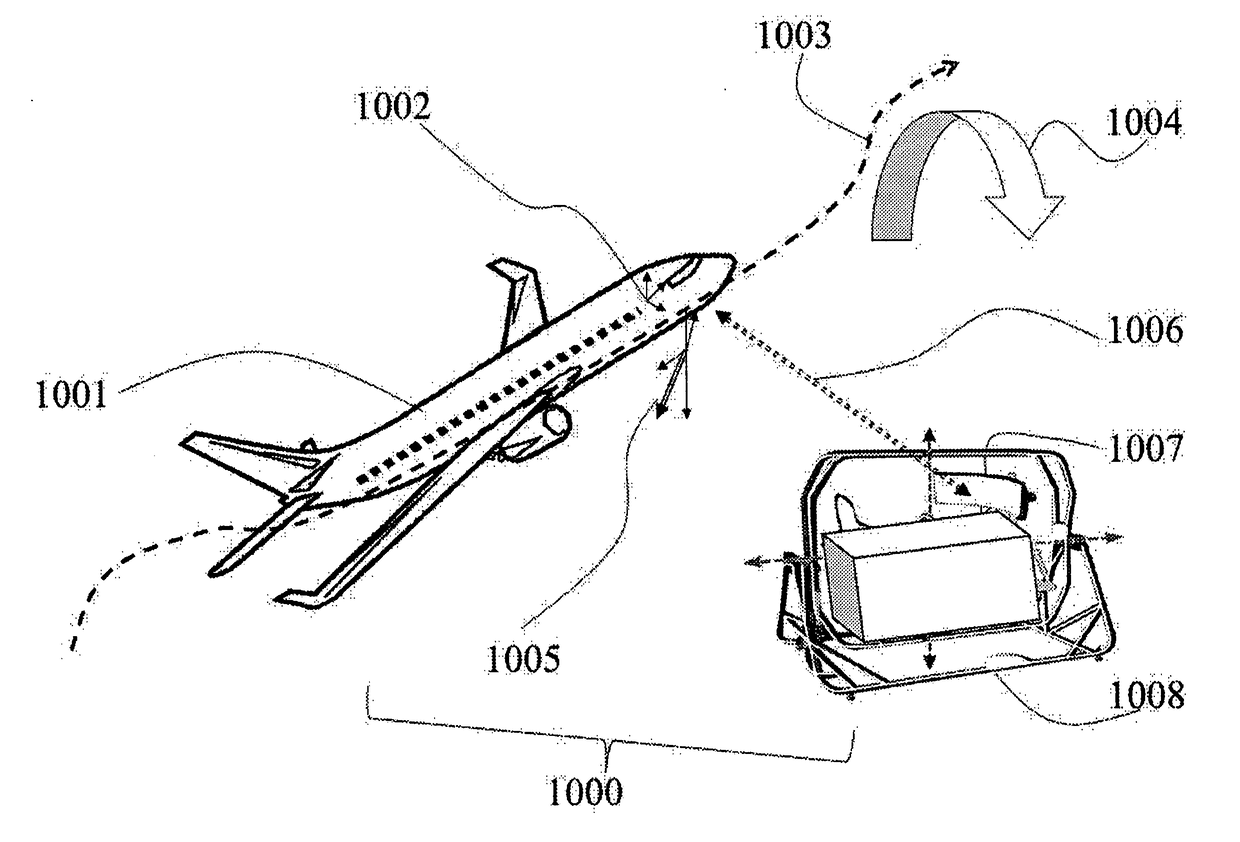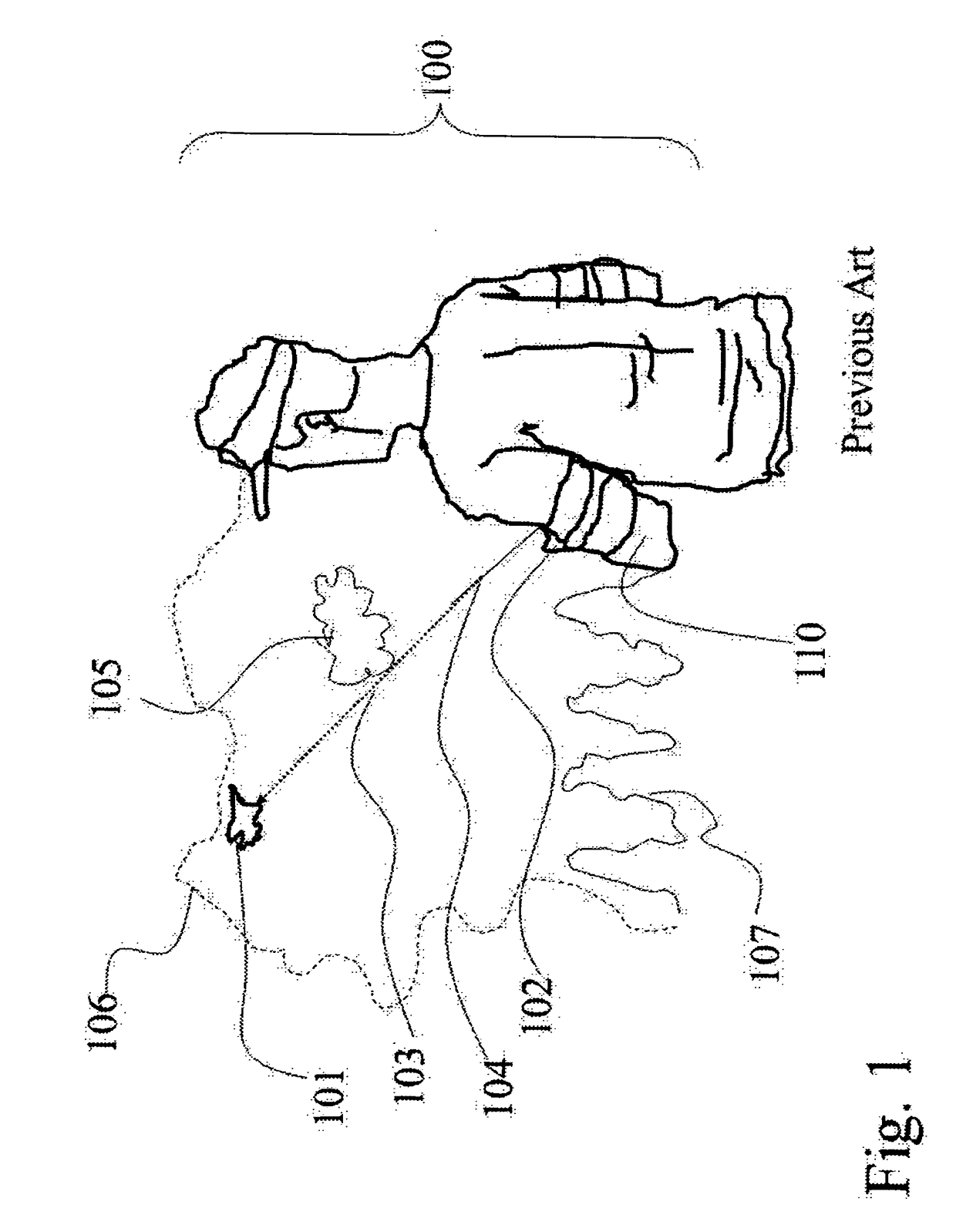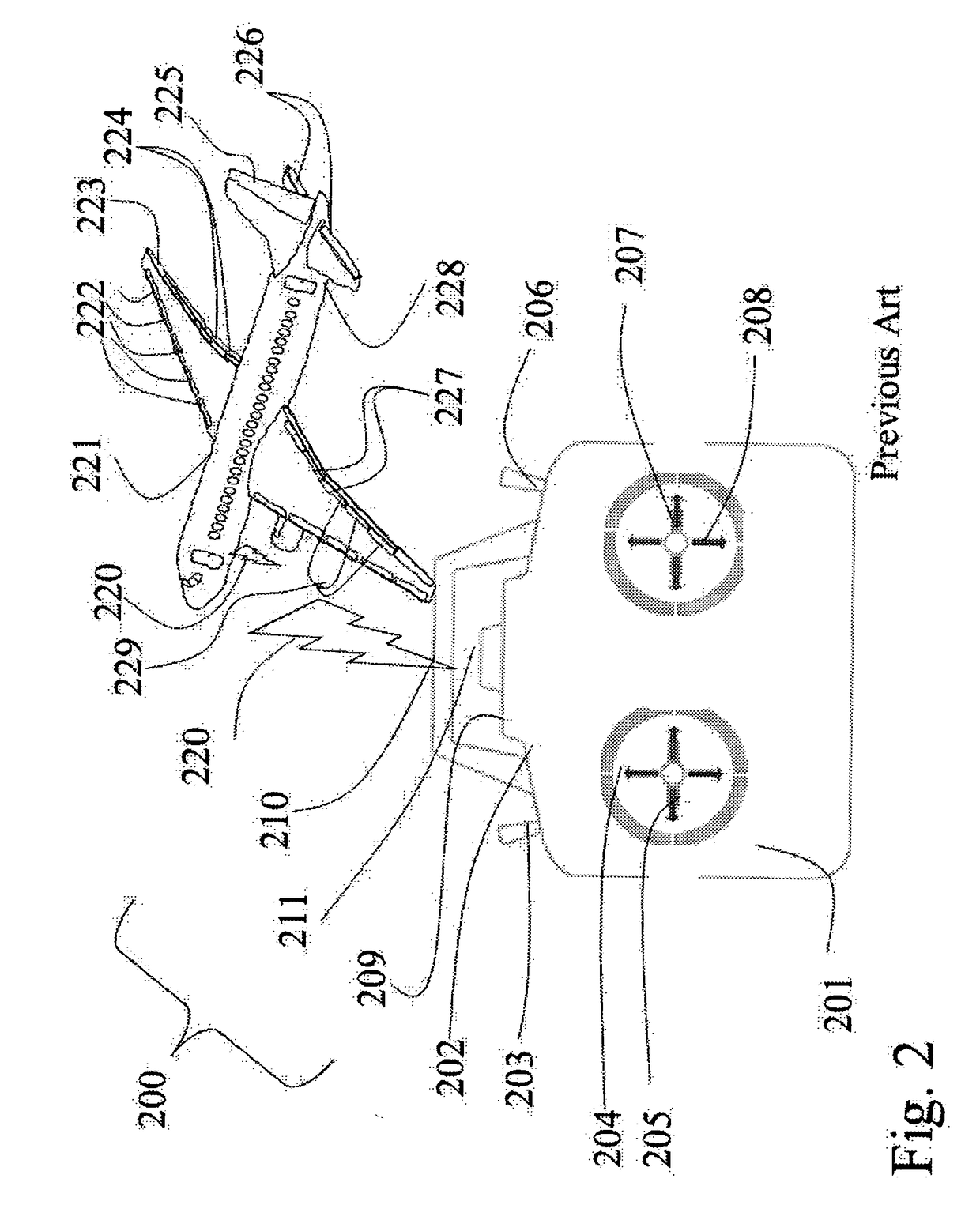Method and device to improve the flying abilities of the airborne devices operator
a technology of airborne devices and flying abilities, which is applied in the field of methods and devices to improve the flying abilities of airborne devices operators, can solve the problems of motion sickness, limited, and virtually indestructible normal use of fpv aircraft, and achieve the effect of minimal risk learning and high quality
- Summary
- Abstract
- Description
- Claims
- Application Information
AI Technical Summary
Benefits of technology
Problems solved by technology
Method used
Image
Examples
Embodiment Construction
[0277]The inventors consider the developments in RC flying systems and motion simulators with wearable electronics, biometrics e-monitoring systems, may be successfully used to improve the quality of education in flying schools, as well to provide a reliable and safe quasi-flight immersion for the public in various entertainment programs, aero-clubs, and a tool for aircraft researchers and professionals involved in SAR operations.
[0278]2. Best Mode of the Invention
[0279]FIG. 15 shows the devices in the best mode contemplated by the inventors of the use of the RC flight simulator with biometric data acquisition and processing system its accessories devices according to the requirements for a more complete sensorial quasi-flying experience which solutions and developments are embedded in the present invention.
[0280]The invention corrects the following previous deficiencies of the previous devices, which are not covering this domain of connecting an RC-plane with an enhanced flying exp...
PUM
 Login to View More
Login to View More Abstract
Description
Claims
Application Information
 Login to View More
Login to View More - R&D
- Intellectual Property
- Life Sciences
- Materials
- Tech Scout
- Unparalleled Data Quality
- Higher Quality Content
- 60% Fewer Hallucinations
Browse by: Latest US Patents, China's latest patents, Technical Efficacy Thesaurus, Application Domain, Technology Topic, Popular Technical Reports.
© 2025 PatSnap. All rights reserved.Legal|Privacy policy|Modern Slavery Act Transparency Statement|Sitemap|About US| Contact US: help@patsnap.com



